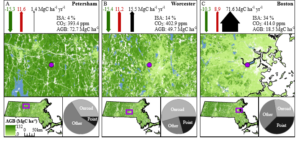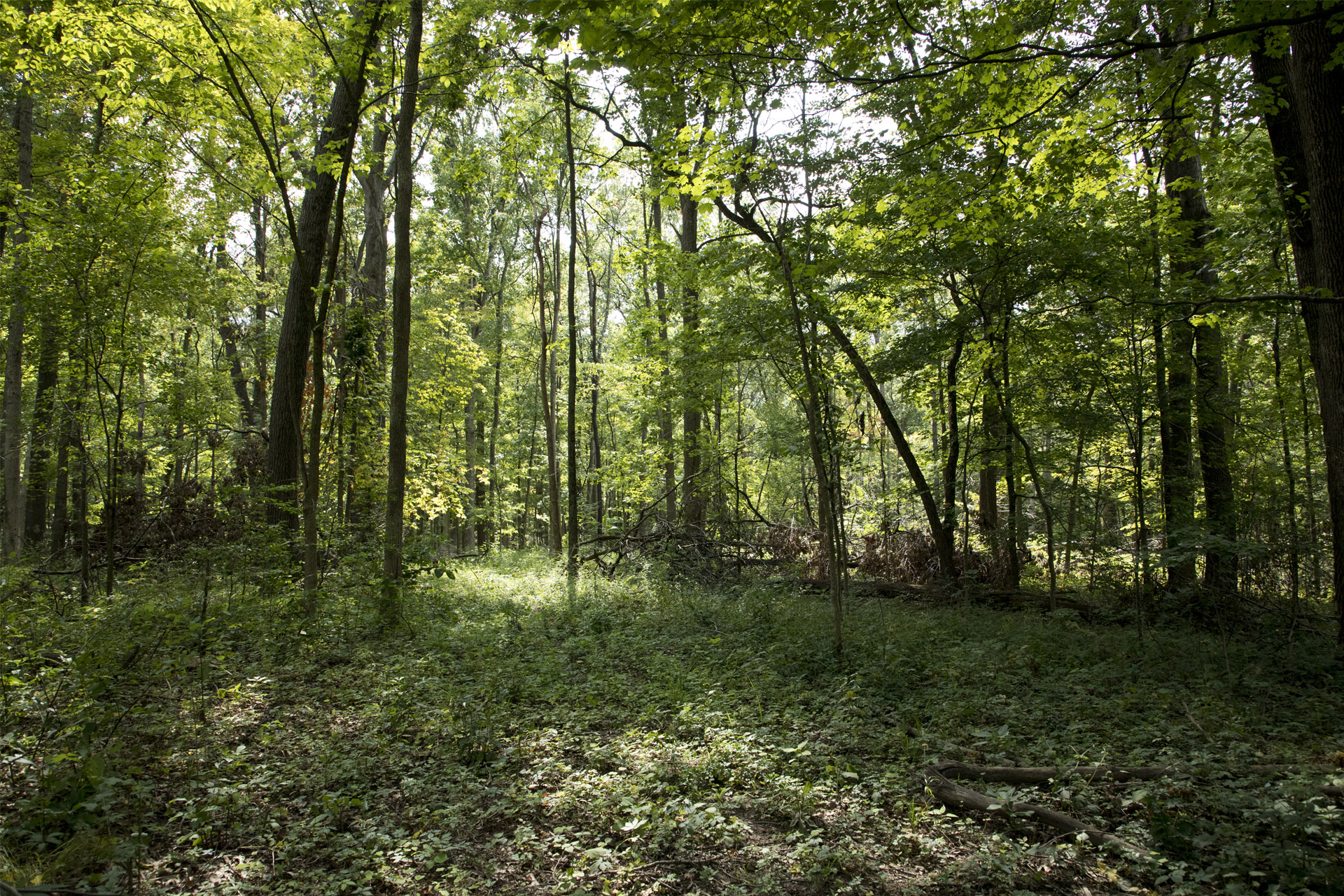In collaboration with Lucy Hutyra’s lab at Boston University I am working to quantify biomass, biogenic and anthropogenic C fluxes, and the spatial distribution of each across the heterogeneous gradient of human-modified ecosystems comprising the urban setting. These urban ecosystems experience a novel combination of growing conditions with no natural analog. Urban vegetation experiences longer growing seasons, reduced competition, elevated N deposition, and higher light, temperature, and ozone. This suite of growing conditions has unknown effects on the ecological patterns and processes in urban ecosystems. As such, existing ecosystem models largely omit urban areas, incorrectly assuming they are ecologically irrelevant. Such models effectively assume these areas have no biological C flux and underestimate aboveground biomass. I combine remote sensing derived estimates of vegetation cover, ground surveys of tree growth/mortality, ecosystem models, and emissions inventories to produce a comprehensive carbon budget for a Boston, MA, These updated biogenic flux rates are combined with spatially explicit anthropogenic flux estimates across a network of urban CO2 monitoring sites as the foundation for a novel carbon monitoring system spanning the Boston-Washington D.C. metropolitan corridor. Improved methods for estimating biomass and biogenic carbon fluxes in urban areas indicates that vegetation is an active and influential component of the urban carbon cycle.




